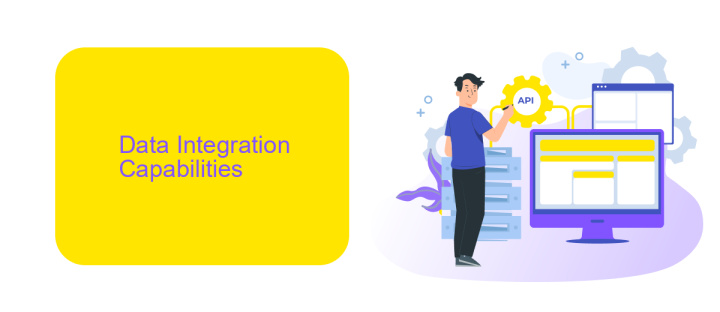Informatica Vs MuleSoft
In the ever-evolving landscape of data integration and management, choosing the right platform is crucial for business success. This article delves into a comparative analysis of Informatica and MuleSoft, two leading integration solutions. We'll explore their features, strengths, and weaknesses to help you make an informed decision on which platform best aligns with your organization's needs and goals.
Introduction
In the dynamic world of enterprise integration, choosing the right platform is crucial for seamless data connectivity and workflow automation. Informatica and MuleSoft are two leading solutions that offer robust capabilities for integrating diverse systems, applications, and data sources. Understanding their unique features and benefits can help organizations make informed decisions tailored to their specific needs.
- Informatica: Known for its powerful data integration and management capabilities, Informatica provides a comprehensive suite of tools for ETL (Extract, Transform, Load) processes, data quality, and governance.
- MuleSoft: MuleSoft excels in API-led connectivity, enabling organizations to create a network of applications, data, and devices with reusable APIs. Its Anypoint Platform offers a unified solution for API management and integration.
- ApiX-Drive: A versatile service that simplifies integration processes, ApiX-Drive allows users to connect various applications and automate workflows without extensive coding, making it an excellent choice for businesses looking for quick and efficient solutions.
Both Informatica and MuleSoft bring unique strengths to the table, catering to different integration needs and preferences. By evaluating their features and considering additional tools like ApiX-Drive, organizations can achieve optimal integration strategies that enhance productivity and innovation.
Data Integration Capabilities

Informatica and MuleSoft both offer robust data integration capabilities, but they cater to different needs and preferences. Informatica provides a comprehensive suite of tools for data integration, including ETL (Extract, Transform, Load) processes, data quality, and data governance. It excels in handling large volumes of data and complex transformations, making it ideal for enterprises with extensive data management requirements. Informatica's platform is known for its reliability and scalability, ensuring seamless integration across various data sources and applications.
On the other hand, MuleSoft focuses on API-led connectivity, enabling organizations to connect applications, data, and devices through a unified platform. MuleSoft's Anypoint Platform allows for seamless integration and orchestration of APIs, making it easier to build and manage integrations in a more agile manner. Additionally, services like ApiX-Drive can complement these platforms by automating data flows between different systems, further enhancing the integration process. ApiX-Drive offers a user-friendly interface and pre-built connectors, simplifying the setup of integrations without requiring extensive coding knowledge.
Application Integration Capabilities

When comparing application integration capabilities between Informatica and MuleSoft, it is essential to understand their distinctive features and strengths. Both platforms offer robust solutions to integrate various applications, data sources, and services, but they approach the task differently, catering to different business needs.
- Informatica: Renowned for its ETL (Extract, Transform, Load) capabilities, Informatica provides comprehensive data integration solutions. It excels in data quality, governance, and master data management, making it an ideal choice for enterprises focusing on data-centric integration.
- MuleSoft: MuleSoft, with its Anypoint Platform, focuses on API-led connectivity. It enables seamless integration through reusable APIs, offering a more flexible and scalable approach. MuleSoft is particularly strong in real-time integration and supports a wide range of protocols and data formats.
Both Informatica and MuleSoft have their unique advantages, making them suitable for different integration scenarios. Informatica is preferred for complex, data-heavy environments, while MuleSoft is ideal for businesses looking to leverage APIs for agile and scalable integration. For those seeking an additional layer of integration flexibility, services like ApiX-Drive can further streamline the process, offering easy-to-use tools for connecting various applications and automating workflows.
Data Governance and Security Features

Data governance and security are critical components when comparing Informatica and MuleSoft. Both platforms offer robust solutions to manage and secure data, ensuring compliance with regulatory standards and protecting sensitive information.
Informatica excels in providing comprehensive data governance tools. It offers features such as data lineage, metadata management, and data quality management. These capabilities ensure that organizations can trace data flow, maintain data integrity, and uphold data standards across the enterprise.
- Data lineage tracking
- Metadata management
- Data quality management
- Role-based access control
MuleSoft, on the other hand, emphasizes API security and integration governance. It provides features like API policies, threat protection, and secure data gateways. These functionalities help in safeguarding APIs from potential threats and ensure secure data exchange between systems. Additionally, services like ApiX-Drive can further streamline integration processes, enhancing security and governance through automated workflows.
Pricing and Licensing
Informatica offers a flexible pricing model based on the specific needs of the organization. Their licensing options include subscription-based pricing, which allows businesses to pay for the services they need on a monthly or annual basis. Additionally, Informatica provides various editions tailored to different scales of operation, from small businesses to large enterprises. This ensures that companies can choose a plan that fits their budget and requirements without overcommitting to unnecessary features.
MuleSoft, on the other hand, typically employs a subscription-based pricing model as well. Their licensing is often based on the number of cores or the volume of data processed, which can make it easier for businesses to scale their usage as needed. MuleSoft also offers a variety of plans to accommodate different organizational sizes and integration needs. For businesses looking to streamline their integration processes, services like ApiX-Drive can be an invaluable resource, offering additional tools and support to enhance the overall efficiency and effectiveness of their integrations.
FAQ
What are the primary differences between Informatica and MuleSoft?
Which platform is better for real-time data integration?
How do Informatica and MuleSoft handle API management?
Can both Informatica and MuleSoft be used for cloud integrations?
What options are available for automating and setting up integrations with these platforms?
Strive to take your business to the next level, achieve your goals faster and more efficiently? Apix-Drive is your reliable assistant for these tasks. An online service and application connector will help you automate key business processes and get rid of the routine. You and your employees will free up time for important core tasks. Try Apix-Drive features for free to see the effectiveness of the online connector for yourself.

